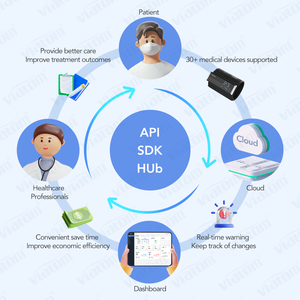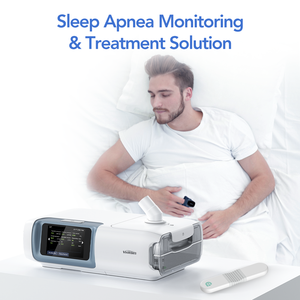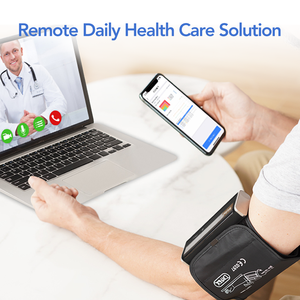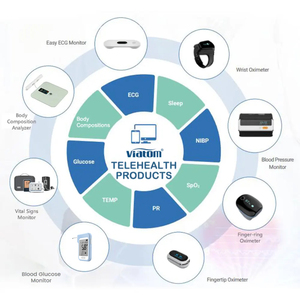
All categories
Featured selections
Trade Assurance
Buyer Central
Help Center
Get the app
Become a supplier

(1192 products available)




















































Medical alert systems for seniors are available in a variety of types, with each one having been designed specifically for certain scenarios. Systems that are wearable typically help people receive the emergency care they need the fastest. Here are the principal forms of medical alert systems available, along with their distinguishing features.
These 3 systems feature the standard call button as part of the design. Pressing this button will trigger an alarm, communicating an emergency to care personnel. Most traditional systems follow a landline phone model. A base unit connected to a landline phone enables this type of system to operate.
The system was initially designed to target customers who were of more mature age and less technologically inclined. The traditional systems were quite simple to use and operated on a very reliable foundation. Their performance proved especially good in rural and suburban environments, where landlines were widespread.
The advent of mobile medical alert systems has mitigated many of the constraints posed by traditional systems. These are wearable gadgets that operate on cellular networks and employ location tracking through GPS.
Senior citizens who are active and lead a very mobile lifestyle find these systems ideal. Also, they are perfect for folks who venture out to unknown locations daily. Since no home phone connection is needed, these systems provide more freedom to subscribers.
Generally, mobile systems protect the wearer even outside the house, unlike traditional ones. This feature makes it highly suitable for seniors who prefer an active lifestyle or may require care while away from home.
Unintentional slips and falls make up a large portion of the medical emergencies that elderly people face. Systems for medical alert that come with fall detection are able to identify when an accidental fall happens. An automated alert for emergencies is then sent out.
Fall detection commonly uses accelerometers and gyroscopes built into the device. These sensors can instantly track changes in the wearer's activity and detect falls. Many come as wristbands or pendants for easy and comfortable wear.
These systems provide seniors with an additional layer of security. They reduce the need to manually activate alerts after a fall, which can be difficult for some seniors. This function allows elderly people who live alone more independence while still ensuring prompt help in emergencies.
The production of medical alert systems with improved water resistance features came about after health experts noted that most accidental falls occurred in the bathroom. The alert systems have been designed for wearers to use even in the shower or bathroom, where the majority of falls occur.
The warning icon on these systems is purposely designed to be water-resistant. This feature makes them useful in most weather conditions. The alert devices are usually waterproof or water-resistant, making them safe for seniors who frequently find themselves in wet environments.
How seniors wear an item, and to what degree they can wear it, is crucial to the design of medical alert systems for seniors. Over 90% of users are aged 65 and above, making durability of medical alerts pertinent. Here is a deeper exploration of the key materials that make medical alert systems durable.
As mentioned above, the medical alert systems manufacturers design with waterproof resistance. This feature accounts for wear in any environment, particularly those containing water. It is a feature that users often overlook due to the misconception that water doesn't damage electronic devices.
However, many manufacturers design every medical alert device with the likely scenario of water exposure in mind. Watching elderly people closely in the shower reveals that many falls occur in this environment. That is why manufacturers specifically make water-resistant devices with fall detection alert systems.
Medical alert systems manufacturers have to make the devices' wearable parts in stronger materials, such as acrylic fiber. These materials have to withstand the rigors of daily activity without compromising ease of use. The average active senior may go through all the items of clothing in a day as they move around or exercise. Hence, the need for a sturdier material.
However, this doesn't mean the senior must compromise on comfort. Look for durable materials that are also soft and won't irritate the wearer's skin. Seniors will be less likely to take the alert device off if it is comfortable to wear all day.
Substituting comfort for durability is not necessary. One can have both. Acrylic fiber bracelets and pendants are strong enough to survive constant abrasion yet light and soft enough not to irritate the skin.
Certain medical alert systems include shock-resistant enclosures to the devices. This feature protects them from any damage from drops or rough handling. Some seniors also suffer from dementia. Their cognitive functions are not optimal. Others just drop things from their hands because they are old and weak. Shock-resistant enclosures protect these devices from falls.
The medical alert market for seniors is large and is expected to grow fast in the coming years. Several factors determine this growth, including population changes and technological progress. Moreover, manufacturers need to consider the use cases in different scenarios to determine the market potential.
The healthcare industry comprises the largest group of users of medical alert systems. They not only help reduce emergency response times but also help reduce the day's workload for healthcare workers. With systems like automatic fall detection, seniors can get the help they need faster, leading to better health outcomes.
Furthermore, telehealth integration with medical alerts allows health professionals to monitor patient conditions remotely. This method limits unnecessary hospital visits and optimizes how care is provided. All these features make medical alert systems vital healthcare tools, giving patients independence while ensuring safety.
As the global population ages, the demand for medical alert systems for seniors increases. Over the next couple of decades, demographic changes will significantly boost the popularity of these services. This increase is due to the Baby Boomer generation advancing in age. To keep this generation, manufacturers design systems that have advanced functionalities like mobile alerts and GPS location tracking.
There is a growing need for solutions that allow seniors to age in place safely and independently. This trend contributes significantly to market growth. One factor increasing the demand for the systems is awareness. More people know about the medical alert systems' availability, prompting purchases, and the systems' resulting advantages.
Advancements in technology have led to the growing popularity of medical alert systems. Many systems for seniors integrate technologies such as fall detection and automatic response detection. This factor improves their overall functionality and appeal.
Furthermore, many medical alert systems now pair up with smartphones and smart home devices. It creates a more holistic approach to senior care. Such innovations promote watchfulness and make the devices more convenient and easier to use. As technology advances, medical alert systems will likely become more sophisticated and more valuable to the consumer market.
Choosing the best medical alert system for a senior can be challenging. It requires weighing the device's features against the individual senior's wants and lifestyle. A well-thought-out decision can improve the quality of life for the individual and enhance their safety.
The median age of medical alert system users is 75 years. In most cases, they experience some level of impairment in their cognitive and motor functions. Therefore, it is crucial to ensure that the system the user selects is simple to use. The alert buttons should be large and easy to find. Moreover, it should have one-touch access so the wearer can easily contact help when required.
Another important consideration is the alert system's coverage area. This factor is because not every alert system works in all locations. While stationary medical alerts with a landline connection may have a limited coverage area, mobile alerts utilizing cellular networks can have wider coverage. Selecting a device with a strong signal is paramount for users in rural regions.
Most medical alert systems must always be connected to ensure the senior's safety. As a result, they come with recurring costs, such as connection costs. Since buyers are B2B, they have to consider these recurring costs and the systems' overall cost.
They should also consider the available different plans and whether they are flexible enough. For instance, some systems offer monthly, quarterly, and yearly plans. These flexible plans help cover different cash flow scenarios and budgets.
Buyers should look closely at the additional features of the medical alert systems. Many medical alert systems have added features like automatic fall detection, GPS monitoring, and system linking with mobile gadgets. All these functions make the medical alerts more effective and relevant.
Manufacturers could also consider giving the features seniors need most but have the added advantage of stimulating interest. For instance, an extra function like medication scheduling that enables the wearer to remember medications they should take will interest many people. It will also give them an additional layer of safety and improve their health outcomes.
A1. The value of alert medical systems for seniors is to enable them always to be in contact with emergency care. They do this by pressing a button, and they link up with care personnel. As a result, they ensure seniors' safety and security, especially if they live alone or face health challenges.
A2. It depends on several factors, such as usage, environmental conditions, and device type. However, the average life of a medical alert system is 3 to 5 years. After this period, one has to replace the system to ensure it is up to date with the latest technology and is working at optimum capacity.
A3. Yes, manufacturers can give medical alert systems extra features. The features are customizable, and they often include fall detection, geolocation, and automatic system linking with telephones and smartphones. Such features improve the system's overall functionality and make it simpler and easier to use.
A4. The factors that most impact the growth of the medical alert industry are technological advancements, increased awareness of the systems, and demographic changes in the population. These factors boost the demand for solutions that enable seniors to age safely and conveniently.
A5. One must consider several factors before deciding the system that fits the senior. They should pay attention to the different types of system coverage areas, features (if any), and costs. Also, determine if the additional features like geolocation, telemonitoring, or automated fall detection come with the systems. These precursory steps will go a long way in selecting the most appropriate medical alert system.